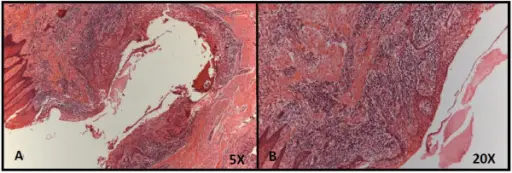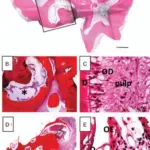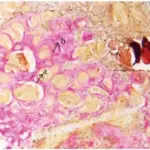Compound odontoma is regularly calcified tissue that bears similarity to teeth or appears as a collection of small teeth.
What is the Pathology of Compound Odontoma?
The pathology of a compound odontoma is:
-Etiology: The cause of compound odontoma is unknown
-Genes involved: None.
-Pathogenesis: The sequence of events that lead to compound odontoma growth of completely differentiated epithelial and mesenchymal cells that give rise to ameloblasts and odontoblasts.
-Histology: The histology associated with compound odontoma shows similar to the layering of the normal tooth in the relation of dentin, enamel matrix, and pulp.
How does Compound Odontoma Present?
Patients with Complex Odontoma typically affect males and females present in the age range of 10-30 years. The symptoms, features, and clinical findings associated with compound odontoma include they are usually asymptomatic.
How is Compound Odontoma Diagnosed?
Compound odontoma is diagnosed by clinical, radiologic, and pathologic correlation
How is Compound Odontoma Treated?
Compound odontoma is treated by excision, enucleation, and curettage
What is the Prognosis of Compound Odontoma?
The prognosis of a compound odontoma is good.



